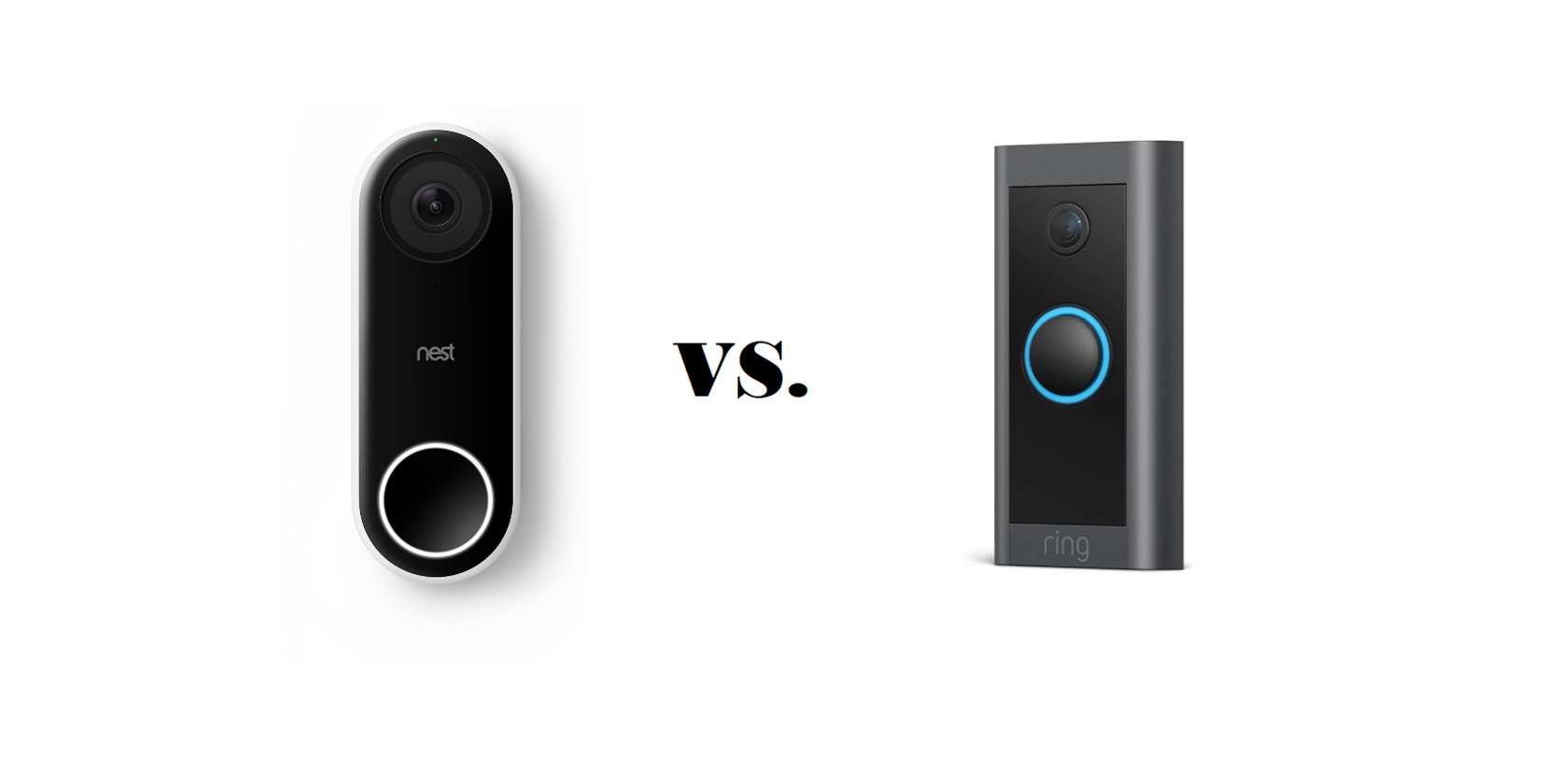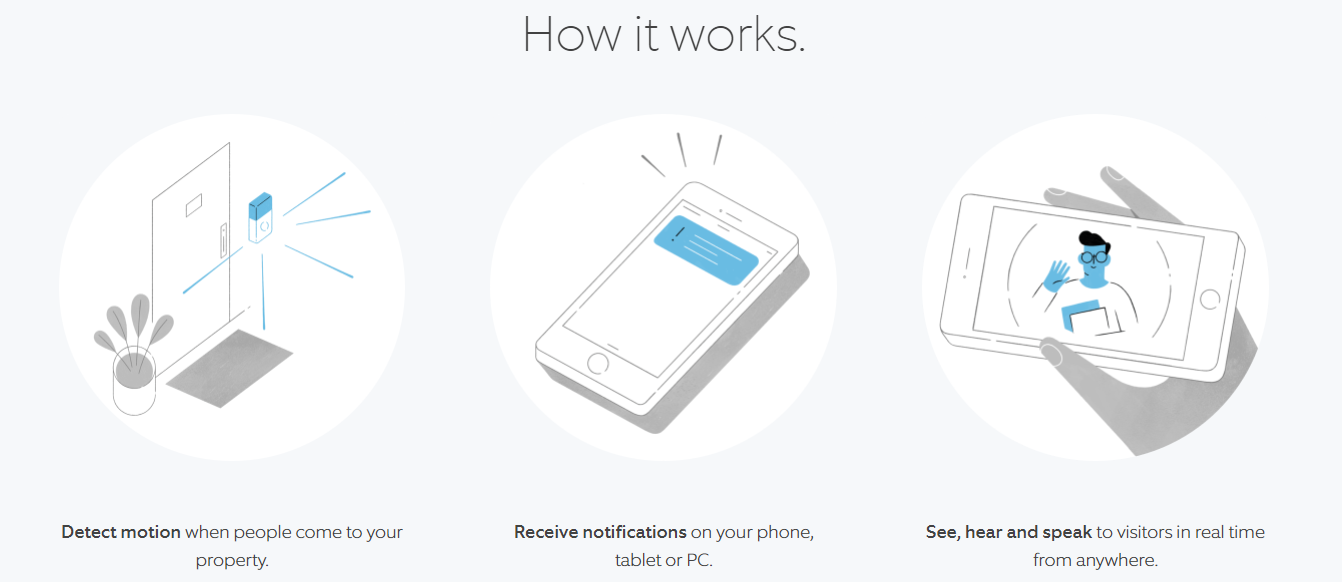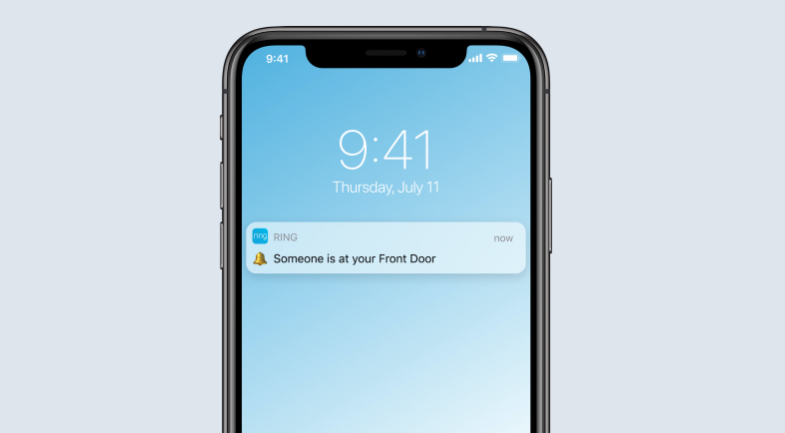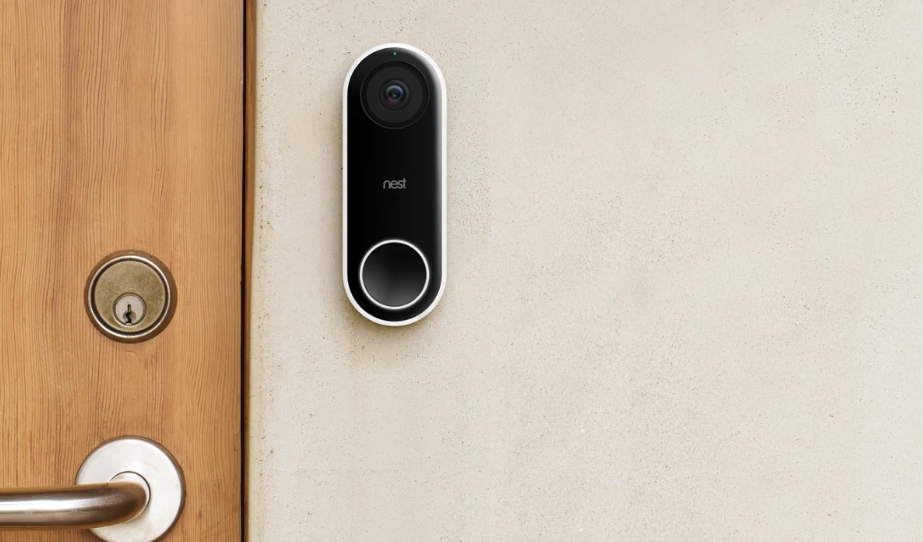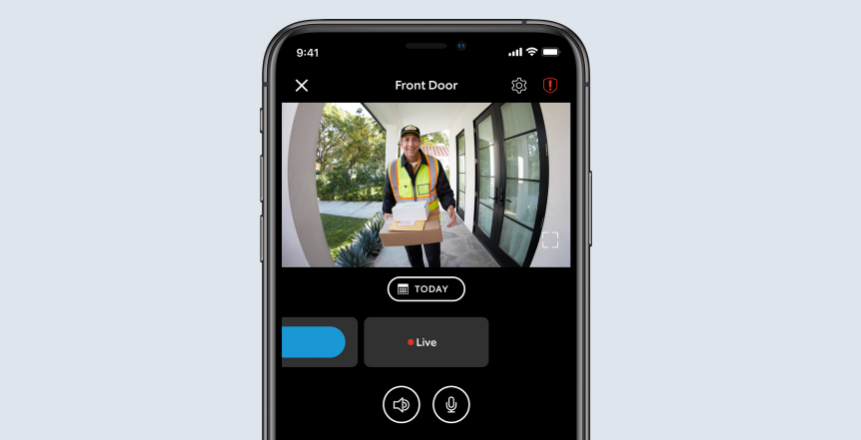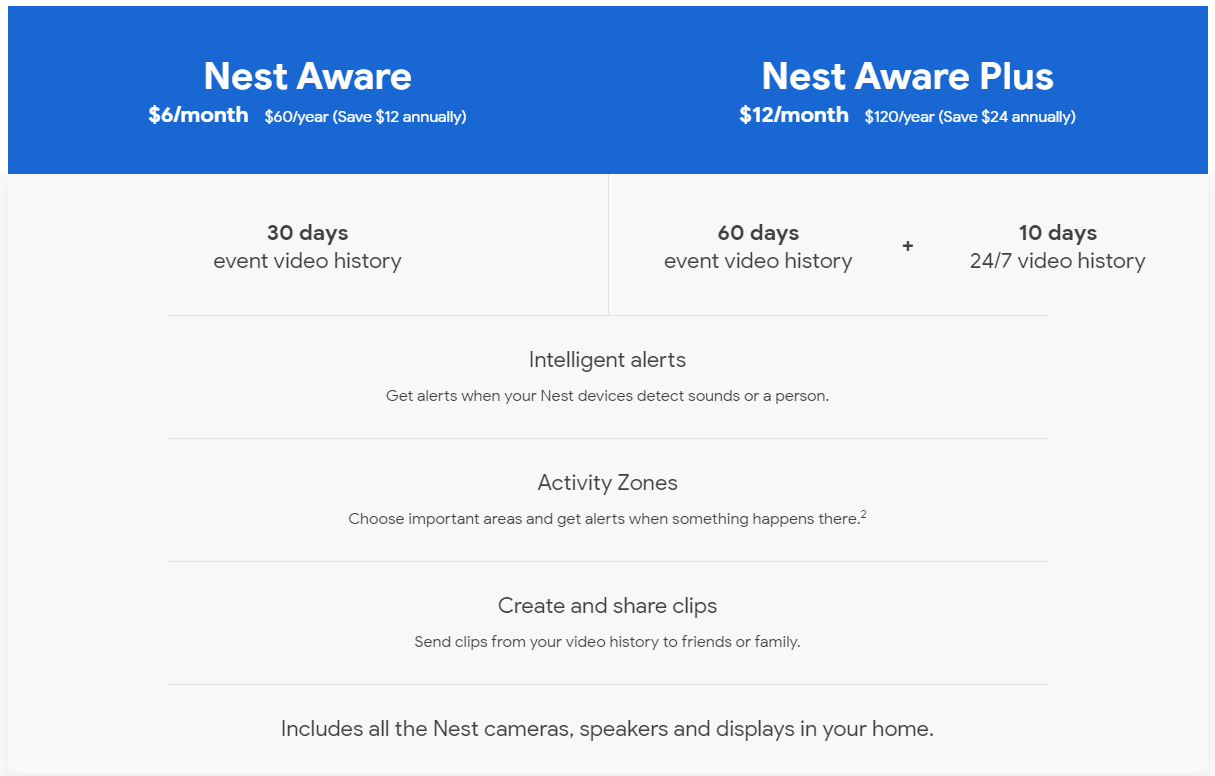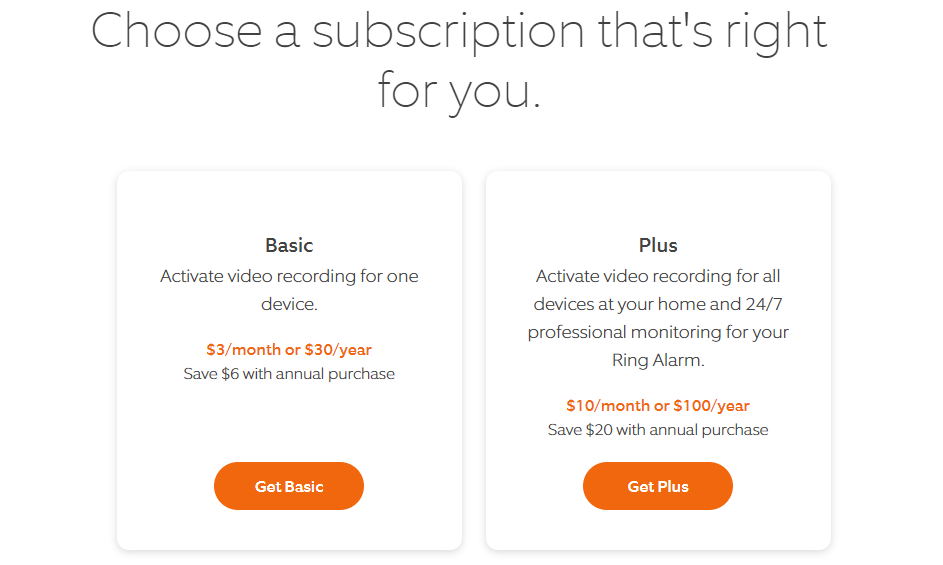One of the easiest ways to improve your home security is with a video doorbell. And Ring and Nest are the two most prominent names on the market.
Video doorbells keep track of what's happening at your doorstep and alert you every time there is activity or if someone presses the doorbell. These devices are simple to use and even simpler to install, but which company provides the better option?
What Is Ring Doorbell?
Ring is a home security and smart home company owned by Amazon. It delivers various products that improve home security.
The company offers a wide selection of smart doorbells for every home. Once you attach it in place, the doorbell helps secure your home by looking out for motion in front of your door. When it detects activity, it sends you a notification on your preferred device, a phone, PC, or tablet. And, you can not only see what's happening outside your door, but you can interact, as well—seeing, hearing, and speaking with visitors in real-time.
A Ring doorbell supports Alexa and even Google Home. It's the more affordable option compared to the Nest one and requires no special skills for installation. You can do it yourself without worry.
It also has a free app for Android and iOS.
As a nice touch, Ring offers both doorbells that use existing doorbell wiring or take power from an included battery.
What Is Nest Doorbell?
Nest is Google's company to target the same market Amazon's Ring does. It makes various smart home products and security systems, including smart doorbells, cameras, and smart locks.
Nest is tailor-made for Google Home and Google Assistant while also compatible with other smart home platforms. While both Ring and Nest are perfect for self-installation, Nest offers an optional professional installation service.
Nest Hello is simple to set up and offers advanced video monitoring features and a user-friendly app to help you for both Android and iOS.
Nest easily replaces your existing wired doorbell and immediately begins feeding you HD video and clear images, regardless of day or night time. It provides 24/7 continuous video streaming and even keeps footage up to 60 days after recording.
How Do They Work?
The Nest Hello lights up and sends you an alert when someone approaches your door regardless if they actually ring your doorbell. After installing the free app and connecting the Nest to Wi-Fi, you'll also receive notifications every time someone does ring your doorbell, approaches the door, or a motion or sound is detected.
It also offers you Quick Responses you can choose, so it answers the door on your behalf if you're unable. If you're at an appointment or a quiet area but get a package, you can select the “Thanks, you can just leave it” reply, and the Nest Hello delivers the pre-recorded message to whoever's at your door.
You can also check the video out and talk to the visitor, or you can ignore it all together. Regardless of what you choose to do, the Nest Hello marks the visit on the app.
The Ring doorbell works in a similar matter. It sends a notification to the device of your choice whenever it detects motion. However, you can modify your settings via the app for receiving alerts.
For example, you can choose to get clued in every time the Ring device detects activity outside your door or only when someone presses the doorbell.
A Similar Design
Both companies' video doorbells have similar-looking designs. The Nest Hello has oval edges, and it's 4.6 inches tall, 1.7 inches wide, and 1 inch in depth. The doorbell button is near the bottom, and there's a light ring around that button that lights up when it's in use. The camera is at the top.
The Ring video doorbell is rectangular. It's 5.1 inches tall, 2.4 inches wide, and 1.1 inches in depth. Its button and camera location match Nest Hello's, and it also has a light that lights up when it's in use.
The Nest Hello can work in temperatures between 14 and 104 degrees Fahrenheit, and Ring works best in temperatures between -5 degrees and 120 degrees Fahrenheit, giving it a bit of extra resilience.
Nest Hello offers a camera with a 160-degree diagonal field of view and 8x digital zoom. It records 1,600 x 1,200 HDR video at 30 frames per second and has a speaker, microphone, and night vision.
The Ring doorbell records in 1080p resolution and has a 160-degree horizontal and a 90-degree vertical field of view. And, like the Nest Hello, it also has a microphone, speaker, and night vision.
Ring vs. Nest: Features
The Nest Hello offers 24/7 video streaming, two-way audio, and even noise and echo cancellation allowing for easy audio interactions. It has smart alerts, which differentiate between objects and people, and over time begins to notice regular visitors, announcing them by name.
It also provides a quiet time feature that's helpful if you're home from a night shift or have a sleeping toddler. When enabled, that feature stops the chime when someone presses the doorbell.
Certain features are behind a paywall, and to access them, you have to get a Nest Aware subscription.
The Ring doorbell also allows interaction by enabling you to see, hear, and talk to visitors from any one of your devices, PC, phone, or tablet. When it detects motion outside your door or someone presses the doorbell button, it notifies you with an alert. If you're away from your home, the Ring device offers live on-demand video and audio so you can check on your house.
Like with the Nest Hello, the Ring doorbell has features you have to pay to access.
Ring vs. Nest: Price and Subscriptions
While Nest only has one video doorbell on its roster, Ring offers various options at different price points ranging from $59.99 to $249.99. As you might expect, the more expensive options offer more features.
The Nest Hello costs $229.
Nest Hello's subscription service, Nest Aware, charges anything from $6 per month (or $60 per year) to $12 per month (or $120 per year). The lowest price gets you access to a 30-day video history, clips and time-lapses, intelligent alerts, and activity zones. The most expensive gets you 10 days of 24/7 video history and 60 days of video history.
If you don't get a subscription, you won't access smart alerts and face detection. Also, you can view the live feeds any time you want, but if someone's outside your door, you only get a snapshot of them that has a 3-hour time limit, and then it disappears.
Ring offers subscriptions that start at $3 per month (or $30 per year) that go up to $10 per month (or $100 per year). The lowest plan lets you share, store, and examine the videos the Ring doorbell takes, as well as access to those recordings for 60 days after they've been taken. The highest plan earns you 24/7 expert monitoring from Ring, extended warranties on your other Ring devices, and even 10% off select Ring products.
Without a subscription, you'll still receive an alert whenever the Ring device detects motion.
Ring is undoubtedly the more affordable option. Getting a subscription is not mandatory, but you'll get much more out of the services if you do. If you have the budget for it, it's worth it to get a subscription.
You might worry about placing an expensive device on your front door. But if the doorbell is ever stolen, both Nest and Ring will replace the devices for no charge.
Is Ring or Nest the Best Smart Doorbell for You?
Despite both Ring and Nest being pretty evenly matched on most accounts, Nest does come out on top overall. It offers better features and has a more crisp image quality. It's more expensive, but if you can afford it, it's a great option.
Ring has a larger number of products to better match your budget. No matter what Ring doorbell you choose, it will definitely upgrade your home security.
Both smart doorbell options are excellent, and you won’t make a mistake getting one.
And past those two big names, there are also a number of other video doorbells on the market.

